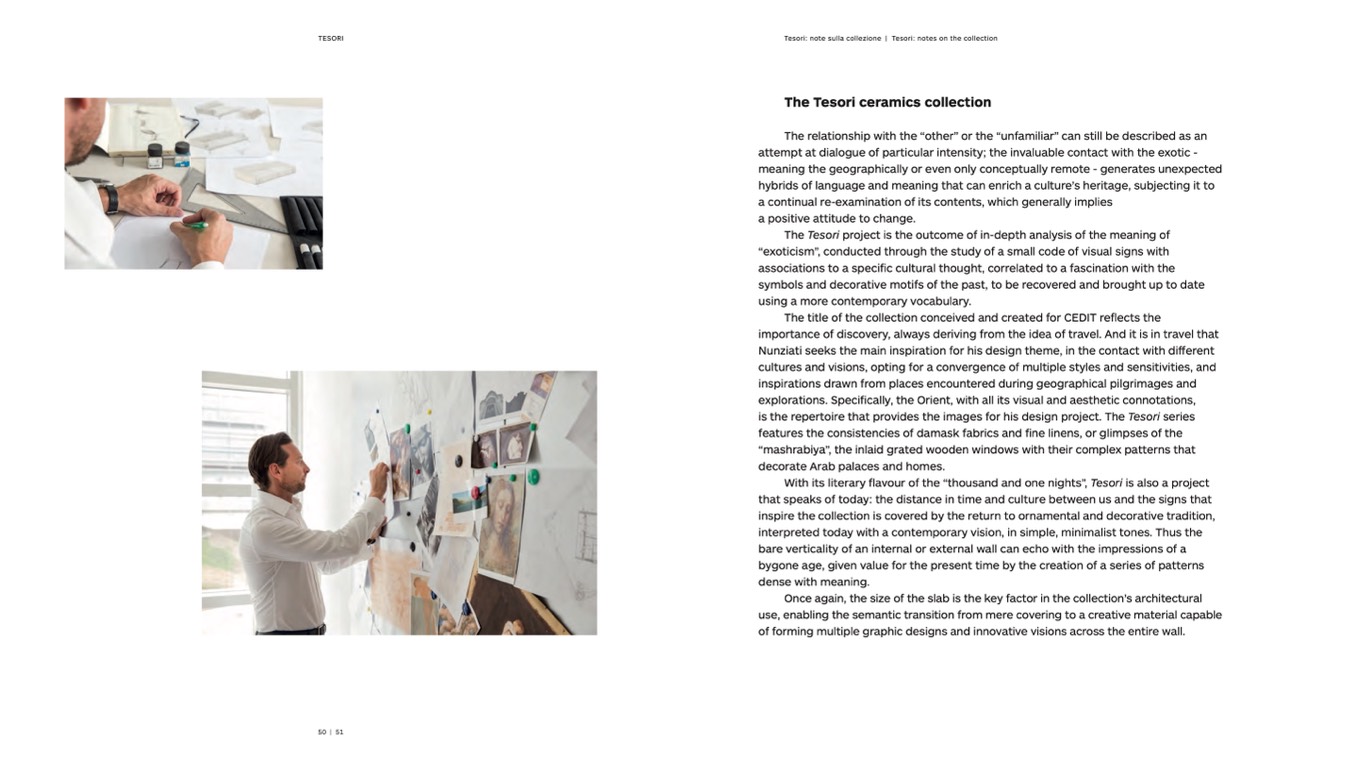
TESORI
Tesori: note sulla collezione | Tesori: notes on the collection
The Tesori ceramics collection
The relationship with the “other” or the “unfamiliar” can still be described as an
attempt at dialogue of particular intensity; the invaluable contact with the exotic -
meaning the geographically or even only conceptually remote - generates unexpected
hybrids of language and meaning that can enrich a culture’s heritage, subjecting it to
a continual re-examination of its contents, which generally implies
a positive attitude to change.
The Tesori project is the outcome of in-depth analysis of the meaning of
“exoticism”, conducted through the study of a small code of visual signs with
associations to a specific cultural thought, correlated to a fascination with the
symbols and decorative motifs of the past, to be recovered and brought up to date
using a more contemporary vocabulary.
The title of the collection conceived and created for CEDIT reflects the
importance of discovery, always deriving from the idea of travel. And it is in travel that
Nunziati seeks the main inspiration for his design theme, in the contact with different
cultures and visions, opting for a convergence of multiple styles and sensitivities, and
inspirations drawn from places encountered during geographical pilgrimages and
explorations. Specifically, the Orient, with all its visual and aesthetic connotations,
is the repertoire that provides the images for his design project. The Tesori series
features the consistencies of damask fabrics and fine linens, or glimpses of the
“mashrabiya”, the inlaid grated wooden windows with their complex patterns that
decorate Arab palaces and homes.
With its literary flavour of the “thousand and one nights”, Tesori is also a project
that speaks of today: the distance in time and culture between us and the signs that
inspire the collection is covered by the return to ornamental and decorative tradition,
interpreted today with a contemporary vision, in simple, minimalist tones. Thus the
bare verticality of an internal or external wall can echo with the impressions of a
bygone age, given value for the present time by the creation of a series of patterns
dense with meaning.
Once again, the size of the slab is the key factor in the collection’s architectural
use, enabling the semantic transition from mere covering to a creative material capable
of forming multiple graphic designs and innovative visions across the entire wall.
50 | 51

